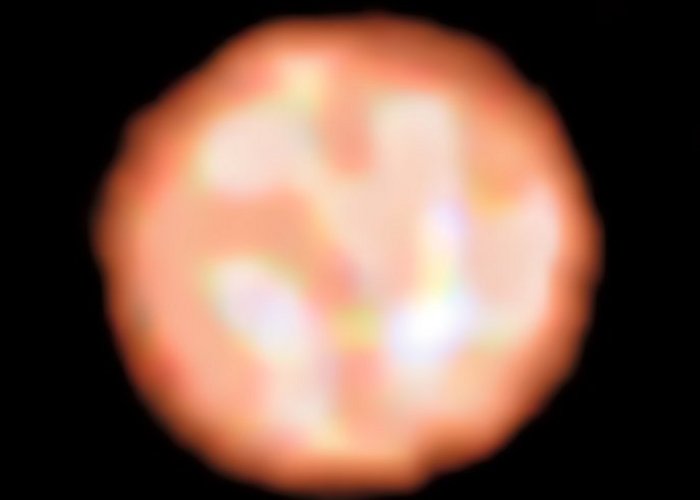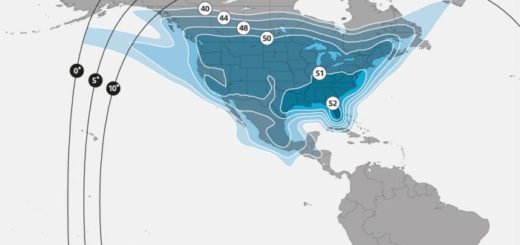First Detailed Image of Surface of Gigantic Star 350 Times Larger Than Our Sun.

For the first time, astronomers created the detailed image of a gigantic star, which is 350 times larger than the Sun.
Its image resembles what our Sun will become at the end of its life in five billion years.
The object named π1Gruis, is located in the constellation Grus (Latin for the crane, a type of bird), which can be observed in the southern hemisphere. The image of the star reveals almost circular, dust-free atmosphere with complex areas of moving material, known as convection cells or granules, according to a recent study.
“This is the first time that we have such a giant star that is unambiguously imaged with that level of details,” said Dr. Fabien Baron, assistant professor in the Department of Physics and Astronomy at Georgia State University.
“The reason is there’s a limit to the details we can see based on the size of the telescope used for the observations. For this paper, we used an interferometer. The light from several telescopes is combined to overcome the limit of each telescope, thus achieving a resolution equivalent to that of a much larger telescope.”
This study provided astronomers with an excellent opportunity to look at the star’s convection cells (or granules) and compare it with that of our Sun.
NOTE: Convection, the transfer of heat due to the bulk movement of molecules within gases and liquids, plays a major role in astrophysical processes, such as energy transport, pulsation and winds.
The Sun has about two million convective cells that are typically 2,000 kilometers across.
The study showed that the the surface of the giant star π1Gruis had a complex convective pattern and the typical granule measured 1.2 x 10^11 meters horizontally or 27 percent of the diameter of the star. It means about a quarter of π1Gruis’s diameter, which is approximately 120 million kilometers across.
The star π1Gruis was observed with the ESO’s PIONIER instrument, which has four combined telescopes, in Chile.
“These images are important because the size and number of granules on the surface actually fit very well with models that predict what we should be seeing,” Baron said.”That tells us that our models of stars are not far from reality. We’re probably on the right track to understand these kinds of stars.”
The detailed images also showed different colors on the star’s surface, which correspond to varying temperatures. A star doesn’t have the same surface temperature throughout, and its surface provides our only clues to understand its internals.
As temperatures rise and fall, the hotter, more fluid areas become brighter colors (such as white) and the cooler, more dense areas become darker colors (such as red).



 Creators of mankind
Creators of mankind Description of “Tall white aliens”
Description of “Tall white aliens” Where they came from?
Where they came from? About hostile civilizations
About hostile civilizations The war for the Earth
The war for the Earth “Tall white aliens” about eternal life
“Tall white aliens” about eternal life Video: “Nordic aliens”
Video: “Nordic aliens” Aliens
Aliens Alien encounters
Alien encounters The aliens base
The aliens base UFO
UFO Technology UFO
Technology UFO Underground civilization
Underground civilization Ancient alien artifacts
Ancient alien artifacts Military and UFO
Military and UFO Mysteries and hypotheses
Mysteries and hypotheses Scientific facts
Scientific facts


















